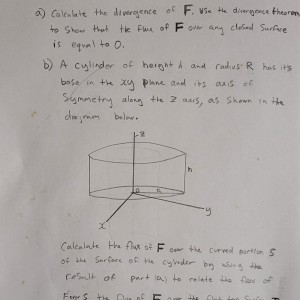Calculus and Vector
Answer
Answers can only be viewed under the following conditions:
- The questioner was satisfied with and accepted the answer, or
- The answer was evaluated as being 100% correct by the judge.
1 Attachment
 Mathe
Mathe
3.7K
The answer is accepted.
Join Matchmaticians Affiliate Marketing
Program to earn up to a 50% commission on every question that your affiliated users ask or answer.
- answered
- 1256 views
- $15.00
Related Questions
- Prove that $tan x +cot x=sec x csc x$
- Find the real solution of the equation $x^{2}-10=x \sin{x}$.
- Need help with finding equation of the plane containing the line and point. Given the symmetric equation.
- Find $\lim \limits_{x \rightarrow \infty} \frac{x e^{-x}+1}{1+e^{-x}}$
- Volume of the solid of revolution for $f(x)=\sin x$
- Calc 3 Question
- Show that the MLE for $\sum_{i=1}^{n}\left(\ln{2x_i} - 2\ln{\lambda} - \left(\frac{x_i}{\lambda}\right)^2\right)$ is $\hat{\lambda} = \sqrt{\sum_{i=1}^{n}\frac{x_i^2}{n}}$.
- I need help with the attched problem about definite integrals


There is a minus typo in the problem. Either the field is =xy^2 i - x^2 yj + 2(x^2+y^2)k or the field is =-xy^2 i + x^2 yj + 2(x^2+y^2)k
There was no typo, sorry. The correct field has a z at the end but it looked like a 2 to me: -xy^2 i - x^2 yj + z(x^2+y^2)k The field must be =-xy^2 i-x^2 yj+2z(x^2+y^2)k
* The field must be =-xy^2 i - x^2 yj + z(x^2+y^2)k